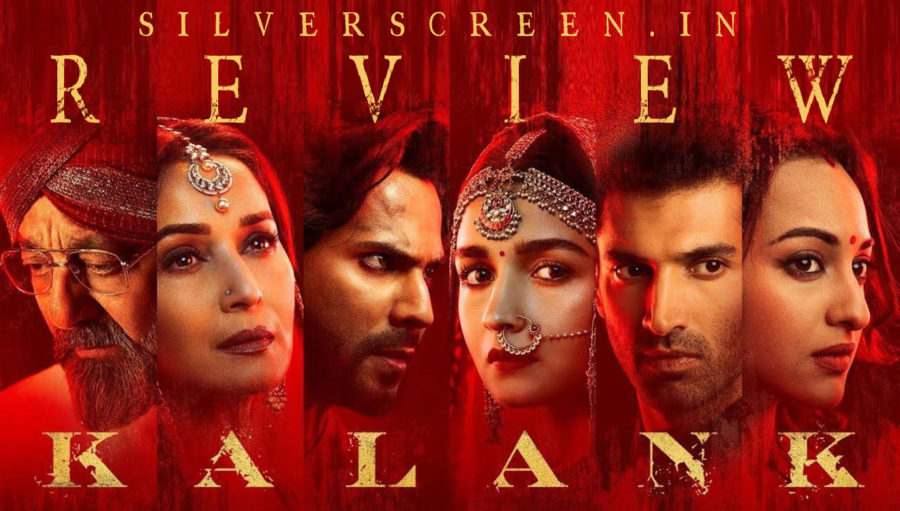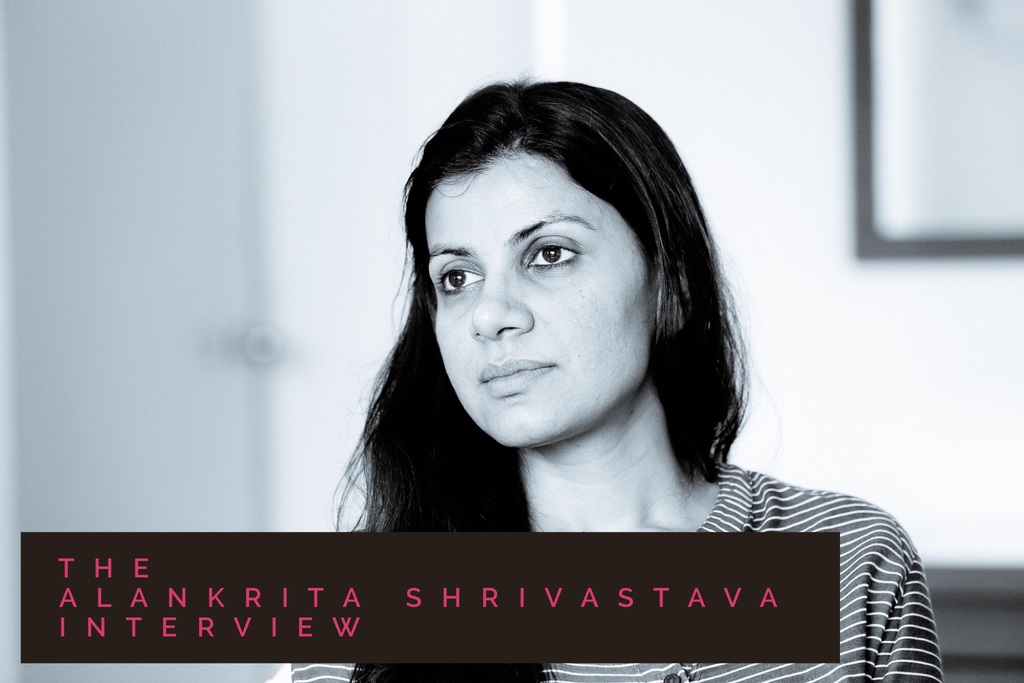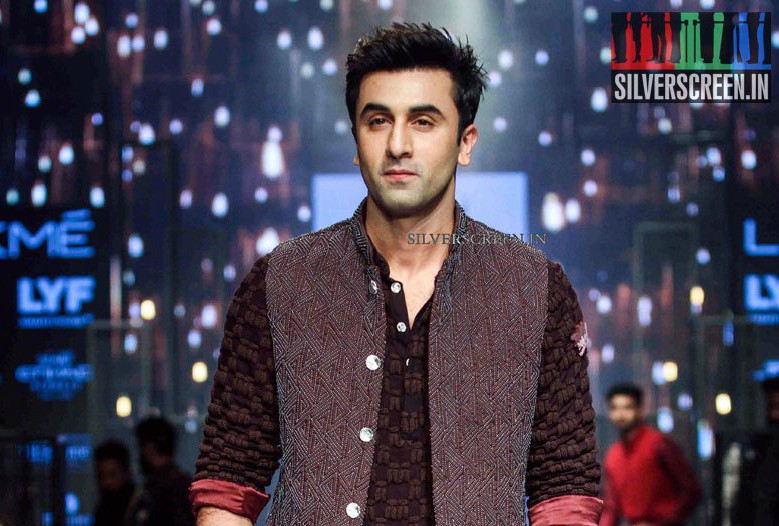Director: Abhishek Varman
Cast: Alia Bhatt, Varun Dhawan, Aditya Roy Kapur
Director of Photography: Binod Pradhan
Music Director: Pritam Chakraborty and Sanchit Balhara
There is a moment in the second half of Abhishek Varman’s Kalank where Bahaar Begam (Madhuri Dixit), a music teacher, realises that her son is heading towards a point of self-destruction. Heartbroken, she collapses, and the camera pulls back to reveal the beautiful ornate floor of her palatial house. Begum is lying at the perfect centre of the majestic floor design as though she is in the middle of a choreographed dance piece. Everyone in the film, regardless of the background they come from or their state of mind, talks in high-school level poetry. A novice journalist asks a young man, a blacksmith, to help her find the stories of the lowly market where he lives in. He stares into her eyes and asks, “Did you come here to find our stories or to hide yours?” This overdose of melodrama and ornate language is strange in this era, like sighting a near-extinct animal in the middle of a city.
There is an excess of words such as nafrat, ishq, mohabbat and ummeed. Even on the pinnacle of grief, the characters are dressed to attend a Ranveer-Deepika wedding. In a scene where two lovers meet in the middle of a busy market where a political meeting is underway, everyone in the frame – the couple, activists, traders and children flying kites in the background – is dressed in various shades of yellow.
The film’s focus is on the grandeur and symmetry of its exterior that belong to a brand commercial. The interior is soulless and narrates a story that has been so overused we know every single plot-point it passes through.
The film is set in 1946, prior to Partition, in Lahore. Roop (Alia Bhatt), a feisty village girl, arrives in Husnabad as the second wife of a wealthy newspaper editor Dev Chowdhury (Aditya Roy Kapur). It is a loveless marriage that takes place at the insistence of Dev’s wife Satya (Sonakshi Sinha) who has cancer and wants to help her husband and the household move on after her departure. Dev is devoted to his dying wife and the cause of ‘One Nation’ on which he writes a controversial column in his newspaper. The lonely new wife goes to learn music from Bahaar Begum, whose haveli is in the town’s most disreputed area Hira Mandi, where artistes, sex workers, blacksmiths and street thugs live. There, she comes across Zafar (Varun Dhawan), a resident Casanova who boldly flirts with her in their very first encounter.
The film’s melodramatic outer-self punches above the weight of its writing. In the scene prior to Roop’s wedding with Dev, it is clearly established that neither of them is interested in this deal. There isn’t the slightest indication that she is hopeful about winning his heart. Yet, on the day after the wedding, we see the ethereally beautiful Roop brooding in her room, lamenting about the husband who left her alone the previous night. There is a post-midnight scene where Begum’s former lover walks into her haveli and finds her on the courtyard, perfectly decked up and smiling longingly into emptiness while a maid is making her hair. Madhuri Dixit resembles a well-polished wooden doll; it is weird that Begum doesn’t behave like a normal human being. The conversation between the former lovers and their son is counter-intuitively funny, written like a loud theatrical piece. Looking for logical fallacies in this mess is pointless. Roop roams around markets and valleys with Zafar to write an ‘article’ about Hira Mandi, although her elite family considers the mere mention of the locality ungodly. It is strange that she, a newly-married Hindu woman from a famous family, and he, known for his amatory adventures, flirt in the open for a long time without falling prey to the town’s rumor mill.
The performances fail too, just like the writing and direction department do. The one element that actually works is Binod Pradhan’s cinematography. It operates on a fundamental rule that everything in the frame – the people, things and structures – should look soft and stunning. The veteran cinematographer’s work well serves the purpose of the film’s luxurious settings, the aforesaid fixation with colour-coded costumes and symmetries.
Recommended
This is the second Bollywood film in five months to narrate a star-crossed Hindu-Muslim love story that ends on a note where the Muslim man has to make the ultimate sacrifice and prove his worth. In Kedarnath (December 2018), the lovers were separated by a natural disaster that ravaged their Himalayan temple town. In Kalank, a communal riot led by the city’s Muslim majority unfolds slowly in the background of the core love story. But, the communal politics is too underdeveloped to be built into a pivotal plot-device. Every discourse about politics in the film is cut by something in the characters’ personal life. For instance, when Roop and Dev start to talk about Partition politics in their library, the shot is immediately cut to show the reaction of Satya who seems to be caught between a strange sense of happiness and jealousy. There is a subtle dismissal of the importance of political activism. When Abdul (Kunal Khemu), the local Muslim League leader, asks Zafar to join an agitation against industrialisation that will render many workers jobless, the latter echoes something several Bollywood films such as Sui Dhaaga have been putting forth as an argument to counter India’s rising unemployment statistics, “If you are ready to work hard, you will never face any issue here!”
Kalank is a long-winded white elephant that assumes pathos, a star cast and visual extravagance can make up for good writing, memorable characters and a sensible story.
***
This Kalank review is a Silverscreen original article. It was not paid for or commissioned by anyone associated with the movie. Silverscreen.in and its writers do not have any commercial relationship with movies that are reviewed on the site.



